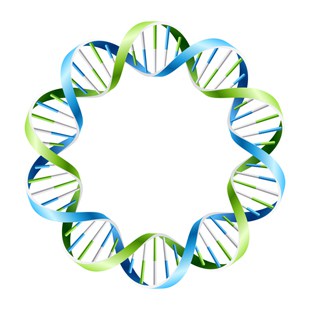Research on Epigenetics and Osteoarthritis
Osteoarthritis (OA) is a complex disease that has a strong genetic component. This degenerative joint condition is progressive, resulting in irreversible loss of articular cartilage. Researchers Bui, Barter, & Scott (2012) maintain that this loss of cartilage is biologically due to the cleavage (splitting) of type II collagen by the enzyme matrix maetalloproteinase (MMP-13).
Many recent research studies suggest that epigenetic events contribute to the progression of this disease, and that gene expression changes reside in diseased cartilage. The mechanisms of epigenetics include histone modifications, DNA methylation, and microRNAs. When these mechanisms work together, the cells are able to respond to environmental changes. Advancements in epigenetic research imply that epigenetic events are associated with OA.
What is Epigenetics?
According to the Stowers Institute for Medical Research (2009), scientists propose that epigenetics is a rapidly growing research field that investigates heritable alterations in gene expression that result from mechanisms unrelated to DNA sequence changes.
An epigenetic trait is an inherited phenotype (observable characteristics) that comes from a change in a chromosome without alteration in the DNA sequence. The word can be broken down with ‘epi’ being Greek for ‘over, above, or outer’, and ‘genetics’ deriving from the ancient Greek word ‘genitive’ which means ‘origin’.
The Science and Research
In 2006, Dr. Yamada and colleagues published their hypothesis regarding the epigenetics of OA in the Journal of Bone and Joint Surgery. These researchers believe that epigenetic changes are gene and cell-type specific, they arise with advancing age, and they are provoked by certain environmental factors. Epigenetic changes in osteoarthritis have no effect on the DNA sequence in osteoarthritic individuals.
Yamada and associates investigated whether epigenetic changes were significant factors in OA through evaluation of DNA methylation status of the three genes that are typically expressed by OA. These genes included MMP-3 (stromelysisn-1), MMP-9 (gelatinase B), and MMP-13 (collagenase3).
The scientists hypothesized that these genes are ‘silenced’ in normal chondrocytes (cartilage cells) by methylation of the DNA base, cytosine, but that abnormal expression is seen with de-methylation, which alters gene expression.
When the cartilage of the femur bones was analyzed from subjects with OA, and extracted DNA was chemically digested with methylation sensitive enzymes, the results showed that less than 5% of the chondrocytes from the cartilage expressed certain types of enzymes. This research helped to prove that there was an association between abnormal gene expression and DNA de-methylation. Furthermore, the epigenetic dysregulation of genes was found to be inherited by particular cells and is therefore thought to be typical for OA and other related diseases.
Osteoarthritis and MMP-13 Enzyme
Researchers Barter, Bui, & Young (2012) found that DNA methylation (a biochemical process, in which a methyl group is added to the DNA sequence) determines whether a gene produces the MMP-13 enzyme – an enzyme that can be switched on or off.
The scientists found that the MMP-13 enzyme is destructive, able to break down joint cartilage. When they evaluated and compared tissue samples from participants with and without OA, the subjects with OA had less DNA methylation at one small position in the gene for MMP-13, which led to increased enzyme levels. This means that an epigenetic change, or ‘signature’ has been identified for OA and thanks to this ‘signature’, drugs may be developed to combat this MMP-13 problem.
A Cure on the Horizon?
Dr. David Young of the Musculoskeletal Research Group at the Institute of Cellular Medicine states that this groundbreaking research paves the way towards a cure for OA, and it shows how epigenetic changes play a role in diseases other than just cancer. He maintains that research will help tailor drug development to prevent progression of the disease and improve quality of life for those with OA.
References
- Barter, M.J., Bui, C., & Young, D.A. (2012). Epigenetic mechanisms in cartilage and osteoarthritis: DNA methylation, histone modifications and microRNAs. Osteoarthritis and Cartilage, 20(5): 339 – 349.
- Bui, C., Barter, M.J., Scott, J.L., Xu, Y. et al. (2012). cAMP response element-binding (CREB) recruitment following a specific CpG demethylation leads to the elevated expression of the matrix metalloproteinase 13 in human articular chondrocytes and osteoarthritis. The FASEB Journal, 2026 (7): 3000 DOI: 10.1096/fj.12-206367
- Federation of American Societies for Experimental Biology (2012). Epigenetic cause of osteoarthritis identified. Science Daily. Retrieved on December 20, 2012 from: http://www.sciencedaily.com/releases/2012/07/120706164344.htm
- Reynard, L.N. & Loughlin, J. (2012). Genetics and epigenetics of osteoarthritis. Maturitas, 71(3), 200-204.
- Stowers Institute for Medical Research (2009). Definition of ‘Epigenetics’ clarified. Science Daily. Retrieved on December 20, 2012 from: http://www.sciencedaily.com/releases/2009/04/090401181447.htm
- Yamada, N., Cheung, K.S.C., Tilley, S., Clarke, N.M.P., Oreffo, R.O.C., Kokobun, S., Bronner, F. and Roach, H.I. (2006) Does epigenetics play a role in the pathology of osteoarthritis? Journal of Bone and Joint Surgery, 88-B,(Supplement III), p. 403.
Last Reviewed 02/Mar/2014
Editor
Latest posts by Editor (see all)
- Oily fish and diabetes prevention - 04/06/20
- Manage the andropause - 11/12/17
- Testing testosterone levels - 07/12/17
